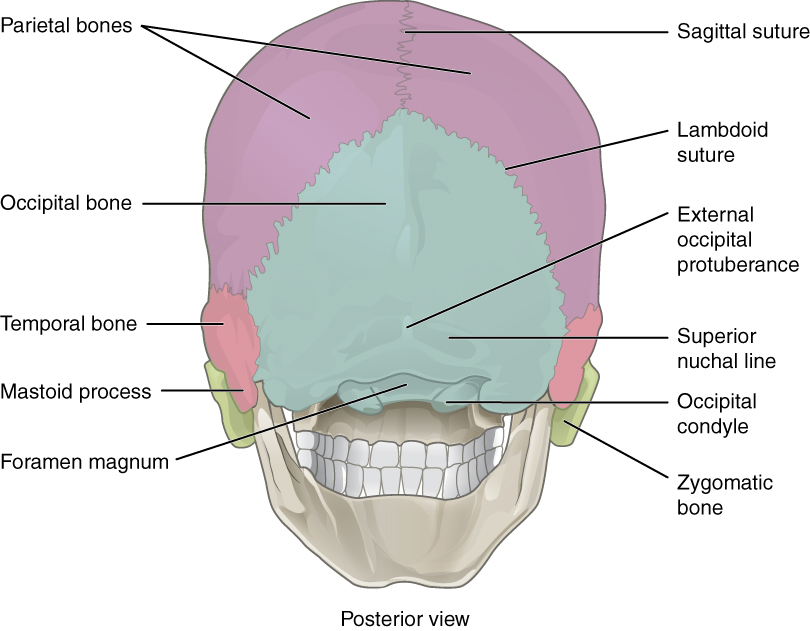| << Chapter < Page | Chapter >> Page > |
The occipital bone is the single bone that forms the posterior skull and posterior base of the cranial cavity ( [link] ; see also [link] ). On the base of the skull, the occipital bone contains the large opening of the foramen magnum , which allows for passage of the spinal cord as it exits the skull. On either side of the foramen magnum is an oval-shaped occipital condyle . These condyles form joints with the first cervical vertebra and thus support the skull on top of the vertebral column.

The sphenoid bone is a single, complex bone of the central skull . It serves as a “keystone” bone, because it joins with almost every other bone of the skull. The sphenoid forms much of the base of the central skull and also extends to the temple area at the sides of the skull . Inside the cranial cavity, the bone with right and left wings which resemble the wings of a flying bird. The sella turcica (“Turkish saddle”) is located at the midline of the sphenoid bone.

The ethmoid bone is a single, midline bone that forms the roof and lateral walls of the upper nasal cavity, the upper portion of the nasal septum, and contributes to the medial wall of the orbit ( [link] and [link] ). On the interior of the skull, the ethmoid also forms a portion of the floor of the anterior cranial cavity (see [link] b ).



A suture is an immobile joint between adjacent bones of the skull. The narrow gap between the bones is filled with dense, fibrous connective tissue that unites the bones. The long sutures located between the bones of the brain case are not straight, but instead follow irregular, tightly twisting paths. These twisting lines serve to tightly interlock the adjacent bones, thus adding strength to the skull for brain protection.

Notification Switch
Would you like to follow the 'Skeletal system' conversation and receive update notifications?